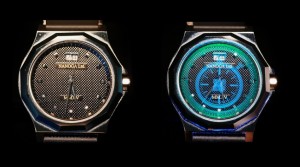Glass watermark now available
Watermarks have been used in business for hundreds of years. The first watermark was used in the 13th century in Italy, but it wasn’t until the 19th century that watermarks became a standard tool in business. Watermarks were developed to authenticate stationery and other official paper documents created by or issued by a particular company. Last month, a Swiss company, called Nanoga, announced that it had perfected a way to place a watermark on glass.
Glass watermarking technique can also be used on ceramics, metal
The new watermarking technology is expected to be used on the face of expensive Swiss watches and other brand name electronics. The watermark is invisible under regular light, but becomes readily apparent under ultraviolet light. The glass watermarking technique was developed at École Polytechnique Fédérale de Lausanne and can be used on glass, ceramics and metals.
The technique works using a process called vapor deposition, which applies the company’s patented chemical formulation onto the surface of the glass. Following deposition, the process uses lithographic printing to determine which areas of the coated glass will be activated under UV light. The lithographic printing can create an image that illuminates when struck by UV light. The watermark could consist of a logo, image, serial number, word or any other distinctive pattern. The result is known as a photonic watermark.
The technique is attractive to manufacturers of high-end goods because it doesn’t change the appearance of the finished product, and the watermark can be activated with an ordinary device. The devices uses to create the watermark are expensive, and the watermark itself relies on a patented concoction that counterfeiters are unlikely to have access to.
The deposited vapor, which serves as a basis for the watermarking technology is about 1/10,000th as thick as a human hair, so it is imperceptible under normal conditions. The process took about two years to develop, and some watchmakers have already expressed interest in incorporating watermarks into their products.
Glass coatings show a great deal of promise for many different applications. Glassprimer™ glass paint, for example, creates a permanent bond with glass surface. Glassprimer™ glass paint is also UV-resistant and exceptionally durable, even in challenging environments. If you’d like more information about Glassprimer™ glass paint, please visit the rest of our site. If you’d like to purchase Glassprimer™ glass paint, please visit our online store .
Photo Credit: EPFL

